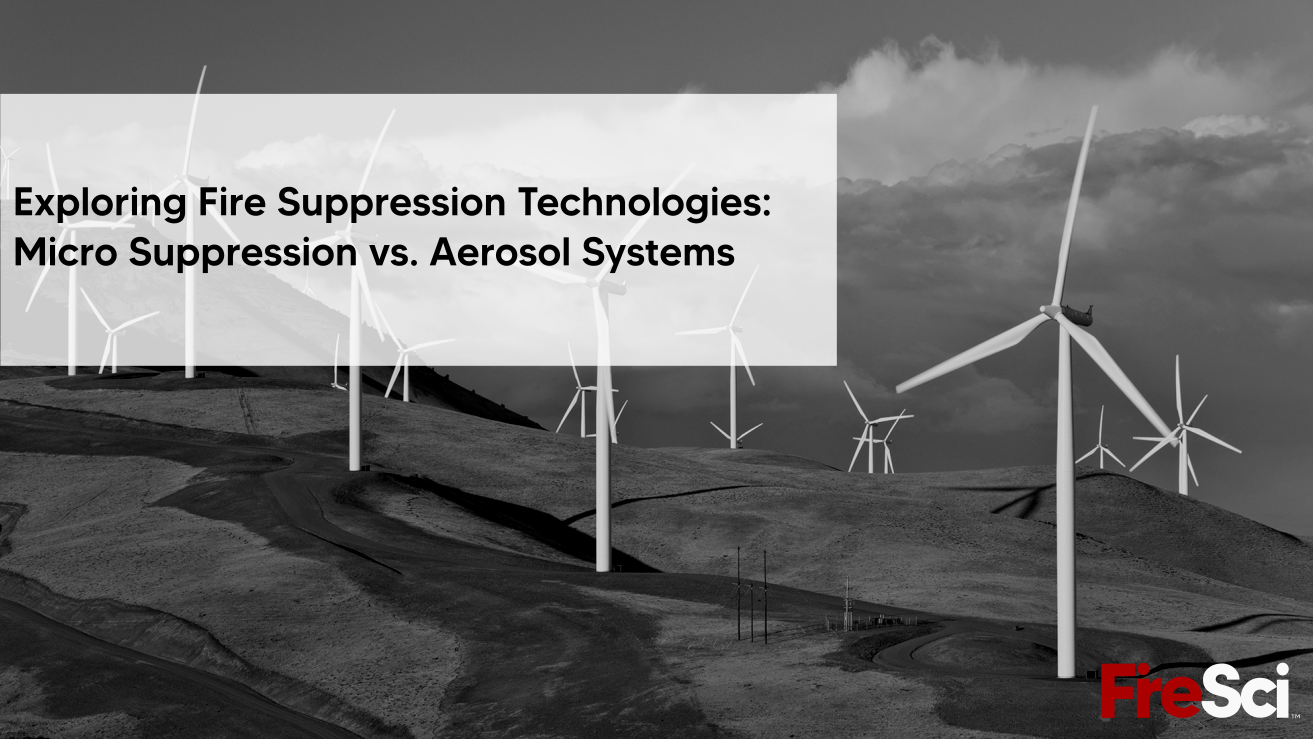
Exploring Fire Suppression Technologies
Aerosol Fire Suppression Systems
Aerosol fire suppression systems, also known as condensed aerosol fire suppression systems, employ a somewhat unique approach to fire suppression. These systems utilize condensed aerosol generators that release a fine solid aerosol into the protected space when activated. The aerosol particles interact with the fire by stopping the combustion reaction on a molecular basis (by binding free radicals) without affecting the oxygen levels. Aerosol fire suppression systems are suitable for various applications, including electrical cabinets, machinery, vehicles, and other enclosed spaces. They offer some advantages, such as fast activation, long shelf life, and a compact design.
Aerosol Fire Suppression Systems have gained recognition for their ability to swiftly suppress fires, making them a popular choice in many applications. These systems utilize fine aerosol particles to chemically disrupt the combustion process, offering advantages such as compact design, easy installation, and effectiveness in enclosed spaces. However, it is important to assess their cost implications and downfalls:
While Aerosol Fire Suppression Systems offer efficient fire suppression, they can be relatively expensive compared to other alternatives. The cost includes the initial system installation as well as ongoing maintenance, refilling, and servicing expenses.
Additionally, in certain environments, the nitrogen gas generated from aerosol discharges can create unwanted byproduct particles that are acidic in nature and tend to harm electronics once in contact with humidity or moisture. Also, residue left by the aerosol particles after fire suppression may require specialized cleanup, resulting in additional costs. This cleanup process may be time-consuming and expensive, leading to extended downtime for businesses. Additionally, the residue can potentially cause damage to sensitive electronic equipment or other critical assets, resulting in additional repair or replacement costs.
Aerosol fire suppression systems function through a chemical reaction that also generates heat. Consequently, the temperature of the canisters can reach 4000°F at discharge. This can be a disadvantage for aerosol fire suppression systems, because the high temperature may lead to re-flash of the fire. Some aerosol fire suppression systems feature cooling blocks that lower the temperature and prevent re-flash.
It is also important to note Aerosol systems should not be used in occupied areas. Discharges can lead to difficulty in breathing and potential eye impairment.
Additionally, some aerosol formulations may contain environmentally harmful substances, such as chlorofluorocarbons (CFCs) or hydrochlorofluorocarbons (HCFCs), which can contribute to ozone depletion or have high global warming potential. These environmental concerns may lead to regulatory limitations or require additional measures for safe handling and disposal.
Unlike Micro-suppression systems, most Aerosol systems are actuated electrically in which external power is required. This may make installation and reliability of system actuation a concern.
Therefore, businesses considering Aerosol Fire Suppression Systems should carefully evaluate the long-term financial and social implications to ensure they meet requirements and are free of harm to others.
Micro Fire Suppression Systems
Micro fire suppression systems are advanced fire protection systems designed to quickly detect and suppress fires in enclosed spaces. These systems utilize small-sized nozzles or heat sensing tubes that disperse clean agents like HFC227ea or FK5-1-12. Micro fire suppression systems are highly effective in quickly extinguishing fires at their early stages, minimizing damage and reducing the risk of injury. These systems are commonly used in critical applications such as server rooms, data centers, control rooms, and other sensitive areas where rapid fire suppression is crucial.
Micro Fire Suppression systems, on the other hand, provide a cost-effective solution without compromising fire protection efficacy. These systems utilize clean agents, such as HFC227ea and FK5-1-12 to rapidly suppress fires while offering significant cost advantages. They are also triggered pneumatically without the need for external power, but can be triggered electrically as well.
Compared to Aerosol Fire Suppression Systems, Micro Fire Suppression systems are generally more affordable in terms of initial installation and ongoing maintenance. These systems require minimal servicing and typically have longer service intervals, resulting in reduced operational costs over time. Moreover, the clean agents used in Micro Fire Suppression systems such as FK5-1-12 do not leave harmful residue, eliminating the need for specialized cleanup and reducing associated costs. With cost-efficient options available, businesses can allocate their resources effectively while ensuring reliable fire protection.
Additionally, Micro Fire Suppression Systems are safe for electronic equipment and social environments as they are non-conductive and non-toxic. The absence of residue also ensures that sensitive equipment or valuable assets are not damaged during the fire suppression process.
Micro Fire Suppression Systems prioritize environmental sustainability. The clean agents used, have low ozone depletion potential (ODP) and are designed to have minimal impact on the environment. This eco-friendly aspect of Micro Fire Suppression Systems aligns with the growing emphasis on sustainable practices and allows businesses to meet their environmental goals while ensuring effective fire protection.
All Things Considered
While Aerosol Fire Suppression Systems offer effective fire suppression capabilities in certain applications, Micro Fire Suppression Systems present a range of cost effective advantages that make them a superior choice for many businesses. With their rapid and targeted fire suppression, versatility in application, minimal residue, cost-effectiveness, and environmental considerations, Micro Fire Suppression Systems provide an optimal solution for businesses seeking reliable and efficient fire protection.
